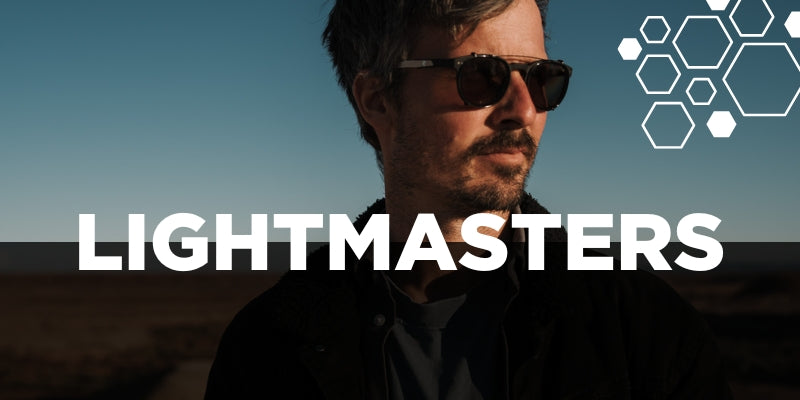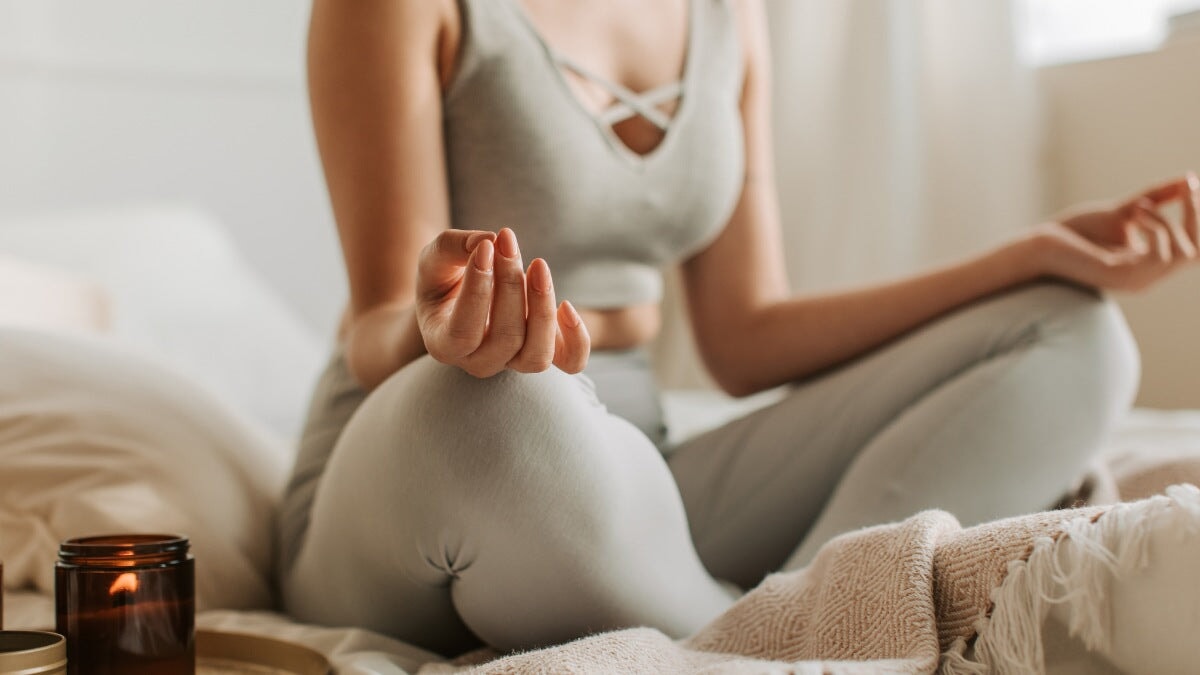Meditation is an ancestral practice that may seem complex at first glance. And if you take a closer look, you will learn that there are many forms of meditation , which will confuse you even more!
Don't worry, we're here to help you see more clearly: this guide deciphers for you several ways to meditate so that you can find the one that's right for you.
In this article :
-
🙏 The benefits of meditation
-
👉 OVERVIEW: Our infographic
-
🙏 Buddhist meditation
-
🙏 Mindfulness meditation
-
🙏 Guided meditation
-
🙏 Transcendental Meditation
-
🙏 Meditate through yoga
-
🙏 A few tips before making your choice
The benefits of meditation
The main objective of meditation is to reach a high level of consciousness by taking a step back from the thoughts that pollute us. It's a clever balance between letting go and really becoming aware of how our mind works.
Many studies agree on the beneficial effects of this practice on our psychic and mental health but also on its repercussions on the physical level.
In short, meditating brings you:
-
🧘 a reduction in stress and anxiety,
-
🙏 better management of emotions through positive thinking,
-
🧠 memory strengthening,
-
🧐 improving concentration and cognitive functions,
-
🩺 the prevention of disorders such as type 2 diabetes, hypertension... in particular by acting on the metabolic syndrome via mechanisms still under study.
- 🧠 Meditating would even slow down brain aging! Researchers from Inserm in Caen and Lyon have looked into the subject through a study that links meditation and slowing down of brain aging.
To find out more, we advise you to read our article dedicated to the many benefits of meditation !
💡 To know: 15 to 20 minutes a day would be enough to reduce stress by up to 50% with a 25% decrease in the secretion of cortisol (the stress hormone).
The Horus X infographic, an image preview

Buddhist meditation: the oldest
Or rather the Buddhist meditations, because there are several!
You should know that these types of meditations are very different from Western meditations and that, contrary to what one might think, this is only one aspect among many others of the Buddhist religion. This is the oldest form of meditation that existed long before Buddha (although it was he who popularized it after reaching spiritual awakening aka Nirvana)
These ancestral techniques are traditional and their practice is more rigorous: it is a good idea to learn this type of meditation from a qualified instructor because they obey strict rules and postures.
Vipassana meditation
It is the oldest of Buddhist meditations. Practiced in India for more than 2,500 years, vipassanā or vipaśyanā meditation literally means “insight” or “seeing things as they really are”. Here, each event is an opportunity for you to meditate, to practice introspection to achieve clarity, improve your concentration and your "right vision".
In a seated position, with your head and back straight, you have to concentrate on your breathing by taking note of the thoughts and visualizations that arise without letting yourself be parasitized, thus reaching an optimal state of consciousness.
Tibetan meditation
An integral part of Tibetan Buddhism, it adds to the concept of vipassana meditation that of samatha (mental calm). To reach it, you will have to concentrate on your breathing as well as on the object of your meditation. Like other forms of Buddhist mediation, its practice is rigorous and supervised.
By practicing this method, the goal is to achieve concentration while remaining very calm and relaxed.
Metta meditation (formerly facebook, no I'm kidding)
Another type of Buddhist meditation, Metta meditation is based on "loving kindness" and encourages love and compassion, whether towards yourself or others.
It is practiced for a few minutes every day, thanks to benevolent mantras to be repeated mentally after clearing your mind, closing your eyes and completely relaxing.
And if you want to show off in the evening, know that Metta is one of the 4 Buddhist virtues and means benevolence, kindness, friendliness... Don't thank us!
Zazen meditation
Zazen is the name given to the seated posture of meditation but also the practice of Zen Buddhist meditation. This type of meditation comes from Japan and emphasizes the benefits of sitting posture combined with meditation to unite body and mind.
Attention, here the posture is of paramount importance and it is recommended to keep your eyes open or half closed! (if you have sensitive eyes, you can always apply our eye massage tips after your meditation session!)
If you do not know how to place yourself in Zazen to meditate , we give you some tips:
-
👉 Choose comfortable clothes,
-
👉 You can sit on the ground or on a meditation cushion (the most recommended, so that your legs and knees are in contact with the ground),
-
👉 First place your left foot on your right thigh, then your right foot on your left thigh,
-
👉 Join your thumbs horizontally, hands at belly level. Ideally, your left hand should be placed in your right hand,
-
👉 Make sure you stand straight with your head and spine aligned.
Mindfulness meditation
It is the one that is most often studied in the context of the beneficial effects of meditation on health. Indeed, you can meet it with a therapist, a doctor or a psychiatrist who use it for its anti-stress properties .
This type of meditation was developed and adapted from Buddhist meditation for the West in the United States by a professor of medicine, Jon Kabat-Zinn in the 1970s. this mindfulness meditation technique has since become more popular in the West.
Note: in Europe, it was in the 1980s that Thich Nhat Hanh, a Vietnamese monk, used the term mindfulness and taught it in a traditional way.
🙏 The principle of mindfulness: reconnect to the present moment and welcome your emotions, thoughts, sensations ... without any judgment. The goal is to be fully aware, vigilant and awake, to accept who we are with kindness and let go.
Mindfulness therefore means being truly present, without parasitic thoughts, in the moment T. And to achieve this, meditation is the key!
You don't need to spend hours there. If you have 10 minutes in front of you, that's enough!
👉 Make yourself comfortable and focus on your inspiration, the movements of the air when you breathe. If you feel distracted at first, that's normal! The thoughts that arise in the middle of the session are not to be banished, take note of them consciously and choose to put your attention back on your breathing.
Guided meditation: ideal to start
If you are not yet familiar with meditation techniques, it is quite possible to start with a method suitable for beginners (but not only!) such as guided meditation.
This type of meditation is, as its name suggests, led by a guide who accompanies you in your session thanks to indications and a set of techniques such as relaxation, visualization, mindfulness... Because in reality, the term guided meditation refers to a combination of several tools that may be common to other ways of meditating.
It can be done in groups or individually, remotely or face-to-face and it is often presented as the most accessible meditation for beginners because we follow a framework with several exercises given by an experienced teacher. If you want to familiarize yourself with the world of meditation, you may be more attracted to guided meditation.
💡 And if you want to test quiet guided meditation in your living room, know that dedicated apps exist! We recommend Headspace , our favorite meditation app at Horus X (0n don't touch com for the recommendation, it's just that we love it).
transcendental meditation
As with Metta meditation, it works on the principle of repeating mantras to reach a state of relaxation while remaining focused. Transcendental Meditation (or TM) is one of the easiest types of meditation to practice , which is what makes it so popular.
🧑🏫 A bit of history: it was in the 1950-60s that transcendental meditation was popularized in the West by its founder Maharishi Mahesh Yogi. It's a mix between relaxation, personal development and meditation that has become a trademark.
The central idea of Transcendental Meditation is that happiness is achieved through meditation through the repetition of positive mantras.
The goal of TM? Combat stress and negative emotions by meditating regularly.
Meditate through yoga
The practice of meditation and yoga are linked: they both allow you to reach an advanced state of consciousness and concentration.
It is often by practicing yoga that one becomes familiar with meditation.
And each type of yoga has its own path to meditation! Some examples :
🧘 Body yoga (hatha yoga) allows you to become aware of your body.
🧘 Breath yoga (pranayama yoga) is based on breathing.
🧘 Energy yoga (kundalini yoga) on energy awakening.
🧘 Relaxation yoga (nidra yoga) works on letting go.
🧘 The yoga of knowledge (jnana yoga) addresses wisdom and self-fulfillment.
A few tips before making your choice
First of all, do not hesitate to inform yourself about the different approaches, find out about the courses given in your region or online and do not rely on a priori: you could have some nice surprises!
What matters is not which type of meditation is most effective or popular, but which is right for you . And to know that, the only way is to test!
Some prefer group lessons, others want to meditate alone. You may find it more comfortable to meditate standing up or simply sitting down, to relax before sleeping or during the day to concentrate better.
Allow yourself to try different methods but keep in mind that the effects of meditation are also seen in the long term.
Because it is not enough to meditate from time to time to feel better! As with many practices, this requires regularity and diligence . As you gain experience, you will be able to notice the effects on your well-being and for them to last, no secret: you have to be regular.
The different types of meditation: the final word
-
🙏 Meditating improves your concentration, reduces your stress, fights anxiety and even prevents certain illnesses: lots of good reasons to try!
-
🙏 You can choose to start with guided meditations, if you are not comfortable with visualization or need guidance.
-
🙏 The types of Buddhist meditations are the oldest but also the most rigorous.
-
🙏 Mindfulness meditation is known for its effects on well-being and is one of the most popular practices for refocusing.
-
🙏 There are meditations based on mantras like Metta or TM.
-
🙏 Practicing yoga can also be a good way to start meditating.

















Comments
Merci pour cet article enrichissant. J’ai choisi la méditation par la respiration ou/et la visualisation, pour le moment je suis à 5 minutes maximum mais j’espère évoluer.
Bonjour , je vous remercie beaucoup de ce tout ce que vous faites pour nous apprendre à comprendre comment nos corps fonctionnent interieurement et comment penser positivement pour l obtention de la confiance en soi et se relaxer , moi j etais sous traitement des antidepresseurs durant 10 annees completes et ayant suivi vos conseils a travers ce site , je me sens deja tres optimiste je sais que je vais m en debarrasser definitievement du traitement avec l aide de meditation en pleine conscience et je me sens vraimenet tres bien juste pour ma premiere semaine et cela m encourage encore de mediter 3 fois par jour de 20 mn chacune .
Que Dieu vous benisse et vous garde pour continuer a etre au service de l humanite .BRAVO